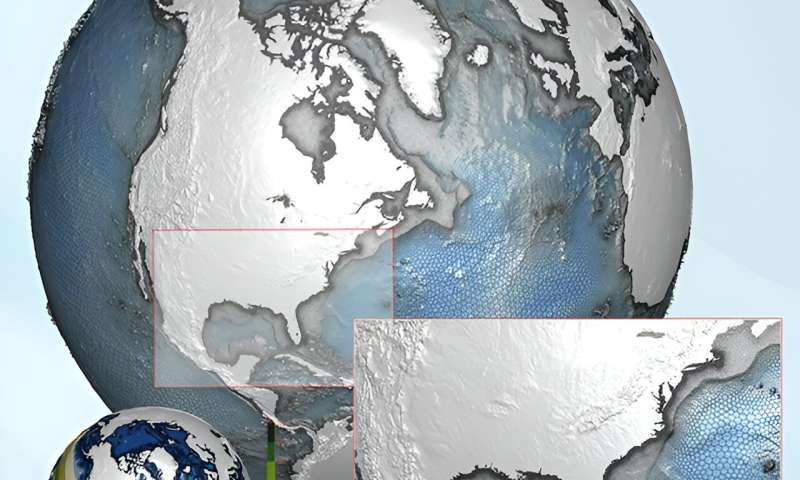Beyond ice cubes: Researchers bring complex shapes to sea-ice dynamics models

Sea ice is an important component of the Earth's climate system. To understand sea ice, scientists need numerical models of how sea ice moves and how it transfers heat and energy. One of the popular sea ice models, CICE, uses a quadrilateral structured mesh. This is a way to represent ice using four-sided shapes. Researchers recently adapted the sea ice dynamics formulation of CICE from a regular structured quadrilateral mesh to more complex, freeform unstructured meshes. These unstructured meshes are used in the sophisticated Model for Prediction Across Scales and the Energy Exascale Earth System Model (E3SM). Unstructured mesh climate models have been gaining in popularity. These models can concentrate on specific regions, which makes the models less computer-intensive. At the same time, they avoid the difficulties of open boundary conditions—the lack of defined borders that can occur in some regional models of sea ice.
The Impact
The approach discussed here uses unstructured Voronoi tessellation to formulate sea ice dynamics. Voronoi tessellation is a way to create mathematical models of irregular patterns, such as those found in sea ice. This approach allows scientists to focus model resolution on regions of interest—for example, away from the Earth's equator. This in turn allows them to conduct higher-resolution sea ice simulations in these regions.
Summary
Researchers adapted a sea ice dynamical core that uses the variational formulation of the spatial operators employed in the CICE model for the polygonal grid cells found in the Model for Prediction Across Scales (MPAS) meshes. The team included researchers at the Los Alamos National Laboratory, the National Center for Atmospheric Research, and the Science Technology Policy Institute.
This sea ice dynamical core is used in MPAS-Seaice, which is the sea ice component of the Energy Exascale Earth System Model (E3SM). The use of the MPAS mesh, with its Voronoi tessellated cells, allows model resolution to be focused on areas of interest and/or small physical length scales, increasing the model resolution achievable for a given amount of computational resources. The MPAS mesh also allows the removal of equatorial grid cells, where sea ice does not form, increasing computational efficiency and load balancing, while also being flexible enough to allow quadrilateral meshes to still be used.
Researchers validated the new dynamical core using a series of idealized test cases examining the error convergence of the spatial operators with increasing resolution. The team used global simulations with realistic forcing to validate MPAS-Seaice against CICE and observations. They found very similar results compared to CICE, with differences explained by minor differences in implementation such as with interpolation between the primary and dual meshes at coastlines.
More information:
Adrian K. Turner et al, MPAS-Seaice (v1.0.0): sea-ice dynamics on unstructured Voronoi meshes, Geoscientific Model Development (2022). DOI: 10.5194/gmd-15-3721-2022
Provided by US Department of Energy